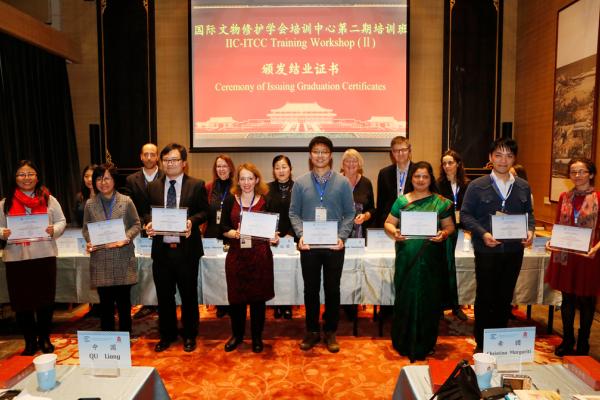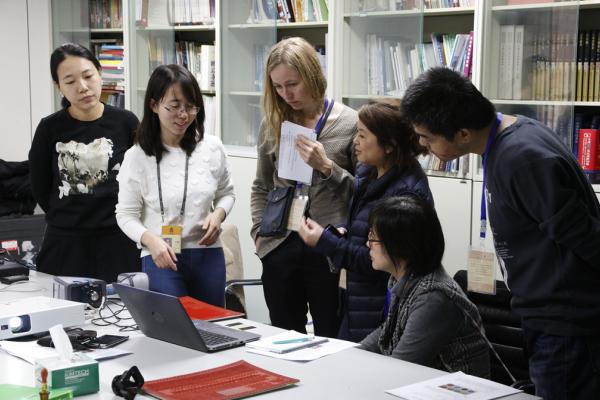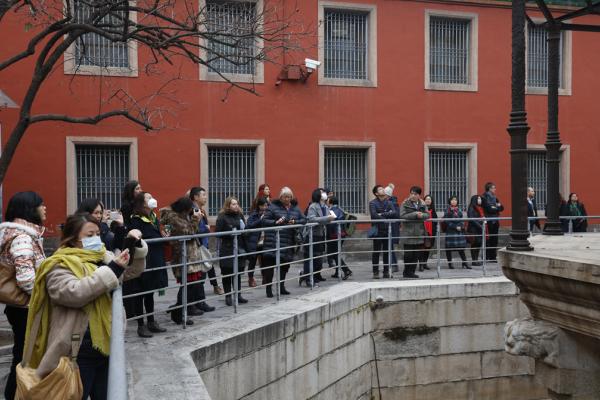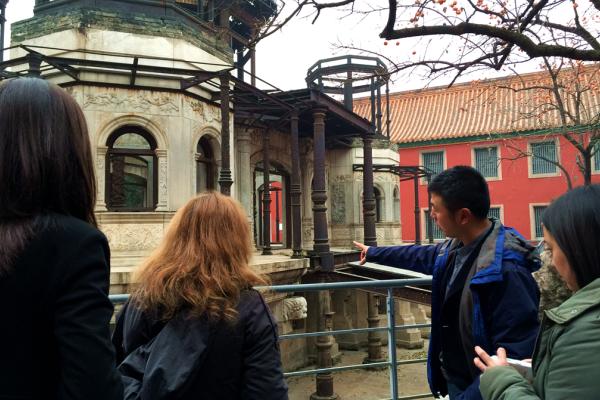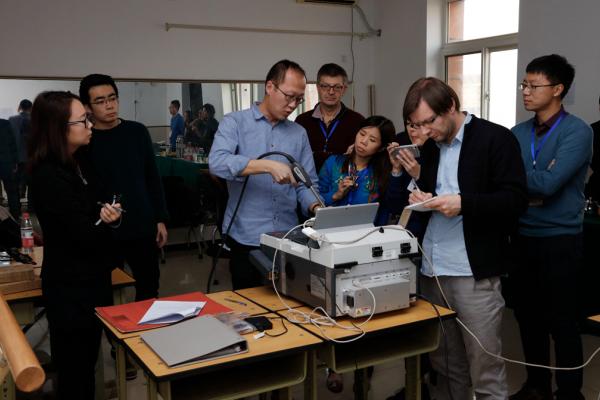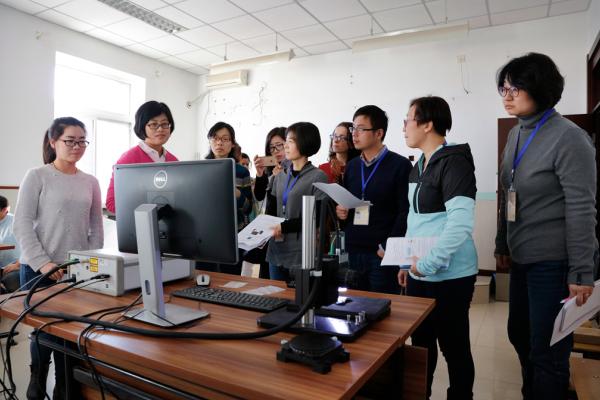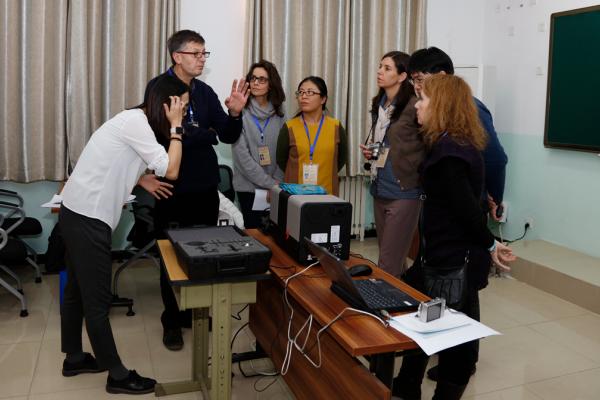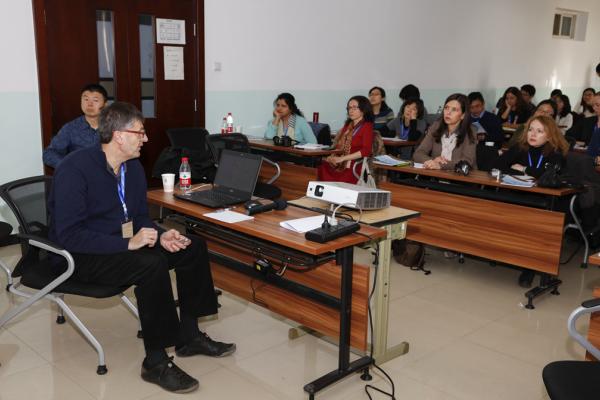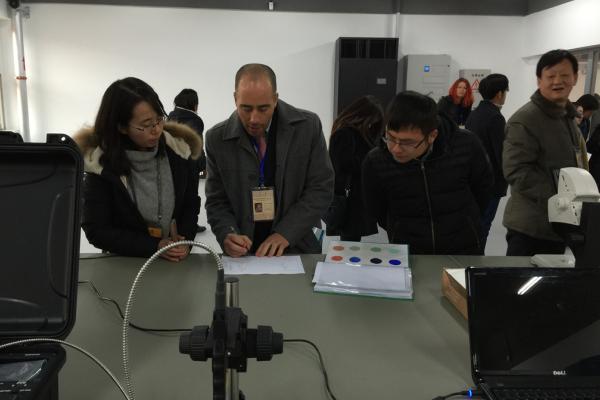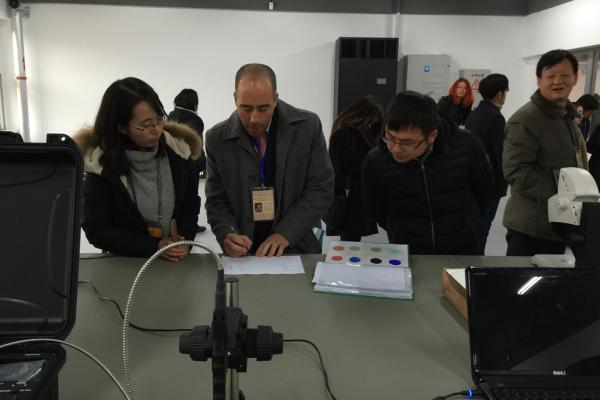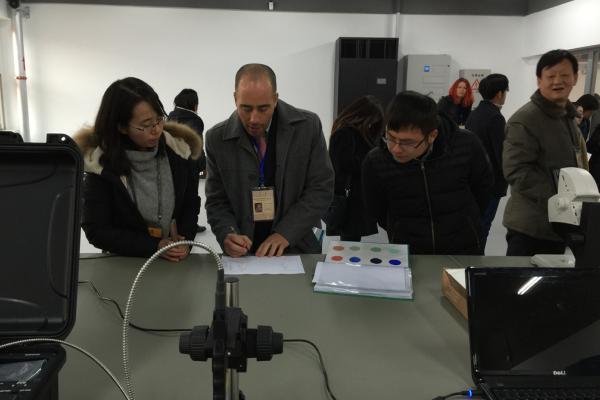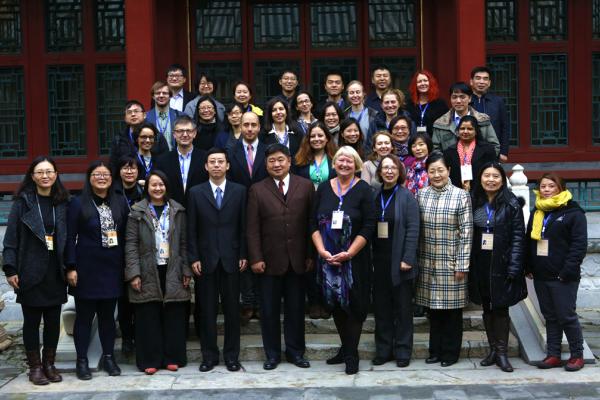ITCC Non-destructive Analysis 2016
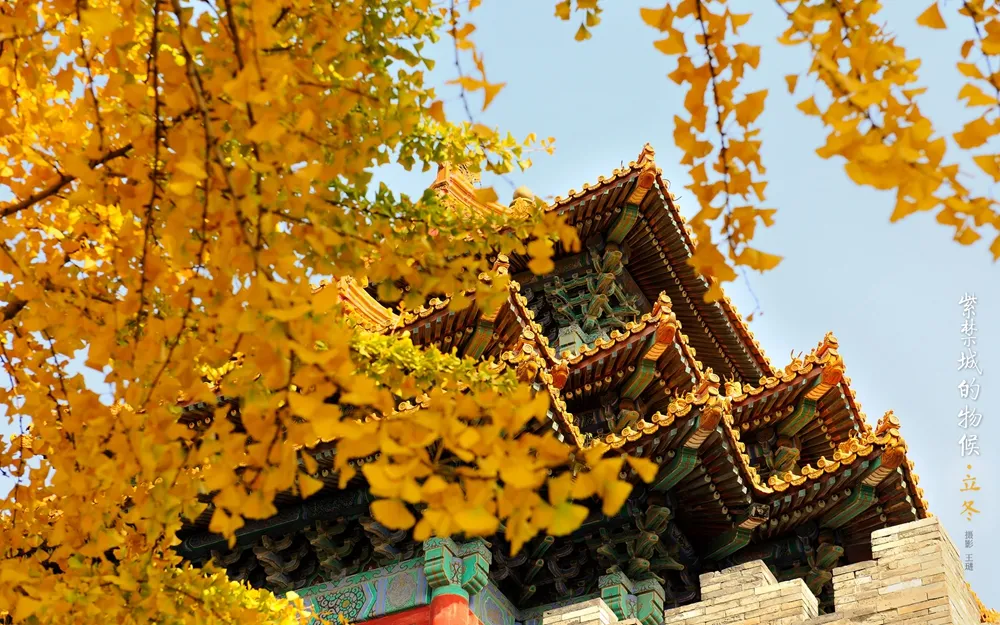
Sunday, 13 November, 2016 - 08:00 to Friday, 18 November, 2016 - 08:00
Place:
Beijing
Theme: Non-destructive Analysis in the Conservation of Cultural Heritage
Dates: 13-18 November 2016
Venue: The Gugong Institute of the Palace Museum, Beijing, China
Every autumn, IIC-ITCC runs a thematic training at the Palace Museum (PM) for conservation practitioners from China and around the world, particularly countries in need of training support in conservation. Spanning a full week in Beijing, the programme aims to expose participants to various aspects of specialist knowledge in relation to the selected conservation topic, to develop skills, disseminate best practice and create a global network of colleagues for future collaboration. With the experience gained in running the pilot workshop, the 2016 Programme took place successfully from 13 to 18 November, welcoming 24 fellows from 13 countries whose day-to-day duties involved primarily the application of ‘Non-destructive Analysis in the Conservation of Cultural Heritage’ – the theme of the 2016 workshop, delivered by six distinguished specialists in this highly specialized field that is becoming more accessible and popular in museum conservation. With the aim of training conservation scientists in both the theory and application of non-destructive analysis, this 6-day course informed participants of the new methods that are best suited for specific problems in the museum context and the associated challenges that arise when analysing museum objects. Participants were guided in the basics of operating associated analytical equipment, and had explored the advantages and limitations of different techniques. They also compared the use of different static facilities and portable equipment. At the conclusion of the course, participants were better informed of the appropriate non-destructive analytical approaches to solve practical cases in their own particular situations. The course was conducted in English, combining theory and practice by means of pre-course preparation, lectures, case studies, discussions, demonstration and practical session in the conservation laboratories, museum visits and excursions.
Course Details
Information of the course is outlined as follows:
Curriculum 1. Current state of non-destructive analysis of cultural properties 2. Analytical imaging and Microscopy 3. Colour and Gloss 4. Optical Coherence Tomography (OCT) 5. 3D Imaging 6. Spectral Imaging 7. X-ray Computed Tomography 8. Fourier transform infrared spectroscopy (FTIR) 9. X-Ray Fluorescence (XRF) 10. Raman Spectroscopy 11. Case studies from the Palace Museum 12. Future directions in non-destructive analysis Practical session A 1.1 Microscopy / confocal microscopy 1.2 Colorimetry / gloss measurement 1.3 Optical Coherence Tomography (OCT) Practical session B 2.1 XRF spectrometry 2.2 FTIR spectroscopy 2.3 Raman spectroscopy Demonstration session 3.1 Near infrared spectroscopy and chemometrics 3.2 Fibre optic reflectance spectroscopy (FORS) 3.3 3D imaging Lecturers The teaching faculty is composed of conservation scientists and specialists from IIC, the Palace Museum and other leading institutions, including: 1. Dr David Saunders, British Museum (UK) 2. Dr Jixiang Shan, Palace Museum, Beijing (China) 3. Dr Jirong Song, Palace Museum, Beijing (China) 4. Professor Haida Liang, Nottingham Trent University (UK) 5. Dr Austin Nevin, National Research Council (Italy) 6. Dr Lynne Lee, Getty Conservation Institute (USA) Medium of Instruction English.
Feedback from Participants
"I liked most the opportunity to meet and communicate with specialists in my research field and also the access to the equipment used today for non-destructive investigation of works of art ..."Olimpia Barbu, Romania
"The style of the course is excellent: lecture in the morning and practical session in the afternoon ..." Radchada Buntem, Thailand
"The practical sessions were very helpful in the sense that it provided context and clarity regarding the theory of the individual topics and study material. The variety of instruments introduced was just remarkable ..." Retha Grundlingh, South Africa
"The lectures had been very useful for enhancing my understanding towards the technical aspects of various non-destructive techniques, why we use them and how they have been applied ..." E-Chieh Chock, Malaysia
"I have taken back large amount of information as to what instrument would be most suitable for my institution. I would research carefully for the selection of equipment which would be purchased for the new conservation lab ..." Kinhong Ip, Macao
Course Materials
Reading reference, teaching notes and presentation files of the course are downloadable from the attachment at the bottom of this page. Copyrights of the teaching materials are attributed to IIC-ITCC and the Palace Museum. For inquiries, please feel free to contact the IIC-ITCC Secretariat at cpcliu@lcsd.gov.hk or iicitcc@126.com.
Acknowledgement
IIC wishes to thank the Bei Shan Tang Foundation, without whose invaluable trust and generosity the IIC-ITCC Programme would not see another year of success in 2016. Gratitude also goes to the Palace Museum for their extra-ordinary commitment and hospitality in hosting our participants and lecturers from all over the world.
![]() IIT-ITCC 2016 Lecture ppt_Colour and Gloss_David Saunders
IIT-ITCC 2016 Lecture ppt_Colour and Gloss_David Saunders
![]() IIT-ITCC 2016 Lecture ppt_Current State of Non-Destructive Analysis_David Saunders
IIT-ITCC 2016 Lecture ppt_Current State of Non-Destructive Analysis_David Saunders
![]() IIC-ITCC 2016 Lecture_Raman_Austin Nevin
IIC-ITCC 2016 Lecture_Raman_Austin Nevin
![]() IIC-ITCC 2016 Lecture_IR-FTIR_Austin Nevin
IIC-ITCC 2016 Lecture_IR-FTIR_Austin Nevin
![]() IIC-ITCC 2016 Lecture_Future Trends_Austin Nevin
IIC-ITCC 2016 Lecture_Future Trends_Austin Nevin
![]() IIC-ITCC 2016 Lecture_XRF_Lynn Lee
IIC-ITCC 2016 Lecture_XRF_Lynn Lee
![]() IIC-ITCC 2016_lecture_CT Scan_Lynn Lee
IIC-ITCC 2016_lecture_CT Scan_Lynn Lee
![]() IIC-ITCC 2016 Lecture_Spectral Imaging_Haida Liang
IIC-ITCC 2016 Lecture_Spectral Imaging_Haida Liang
![]() IIC-ITCC 2016 Teaching Outlines and Readings
IIC-ITCC 2016 Teaching Outlines and Readings
![]() IIC-ITCC 2016 Lecture_Optical Coherence Tomography_HaidaLiang
IIC-ITCC 2016 Lecture_Optical Coherence Tomography_HaidaLiang
![]() IIC-ITCC 2016 Lecture_3D Imaging_Cristiana Achille
IIC-ITCC 2016 Lecture_3D Imaging_Cristiana Achille
